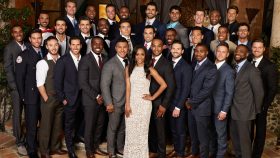Our Crowd Tracks report is back. This time we’re turning our attention to the global goings-on of sports fandom...
Download the new report here.
Crowd Tracks is our social data series, where we use our Culture At Scale method to highlight and analyse trends at the intersection of brands and culture. At what feels like a watershed moment for supporters of all types of sport, we’re bringing you the latest in fan experience, values and culture.
In this edition we uncover how fan protests have mobilised on social platforms across the world, analyse Instagram data to track emergent fandom, and explore the rise of new, immersive experiences for fans, featuring 5G stadiums and VR.
So what’s happening in sports fandom around the world?
Sports experience is diversifying globally and fan culture is becoming more complex and inclusive. In the UK we saw a diverse team GB bring home a historic win of golds, silvers and bronzes, providing a balm for a divided nation; while in India eSports has boomed, with fantasy cricket leagues becoming nice little earners for some. Japan’s Naomi Osaka became a style icon on the cover of Vogue after pulling out of the French Open due to mental health concerns. And in rugby: global following of the sport continues to rise, with World Rugby publishing a report stating plans to attract 10% more followers by 2025.
But that’s not to say things can’t get tense out there…
2020-21 saw sport become increasingly embedded within the thorny issues of global politics. Racism and ongoing BLM protests have seen conversation spikes in the US, Europe and around the world. America has been divided by opinions on NFL players taking the knee, as has the UK where racist abuse of black players during the Euros saw widespread condemnation.
Mental health concerns have been firmly thrust into the foreground in most recent sporting events, with athletes such as Simone Biles speaking out. Indian cricket became highly politicised, getting entwined with farmers’ protests.
The ethics of sports partnerships have also come under the spotlight, with many calling for a boycott of the T-20 league after what were seen as unethical sponsorships from the Chinese company Vivo.
What trends are on the rise?
People want more muscles. While gym culture is a mainstay of IG culture, images of muscular bodies have increased by 45% in the last nine months. Wrestling is up by 70% and Boxing has seen a 55% rise. TikTok has caused dance to quite simply soar. Dancing has risen by a whopping 215% and cheerleading too is up by a similarly impressive 163%. And more young women are skating, the sport’s searches rising by 98%.
Which brand really pushed the boat out?
The last year saw the NBA get seriously phygital. They tapped into the emergent interest in NFTs (Non-Fungible Tokens) with Top Shot, a platform that allows fans to buy special, unique digital souvenirs. But it doesn’t just stay in the ether. The NBA are looking at ways of making this physical as well, bringing the digital collectables into the IRL sport experiences.
What’s the future of fan experience?
In short – Technology. Technology is set to offer new revenue streams for clubs and preserve the stadium experience for decades to come. 69% of fans report the use of emerging technologies has enhanced their viewing experience both inside and outside the stadium. Sports brands need to act fast on this or risk losing out to the ever-dominant tech industry.
And finally: how have fan values changed?
Fan communities used to be defined by one thing: their shared support. Now, sports fandom – and fandom in general – is built around cultural values beyond the sport itself. Whether it’s a desire for accountability, transparency, or greater representation, fans are now banding together around shared causes, calling on clubs and athletes to use their power for good.
Thanks to social media, fans can share information and mobilise, take issues into their own hands and vocalise what matters. Sporting institutions need to prioritise the voice of the fans, and make smart appointments – such as heads of diversity or culture – to ensure their businesses are run fairly and in line with their fans’ values.
You can download the full Crowd Tracks: Sports Fandom report here
Culture At Scale is a powerful new addition to how Crowd DNA pinpoints and tracks trends. Supported by the advanced NLP, AI and machine learning capabilities of strat7.ai, we tap into the sheer size and incredible pace of the online conversation, presenting future scenarios and defining credible opportunities.



